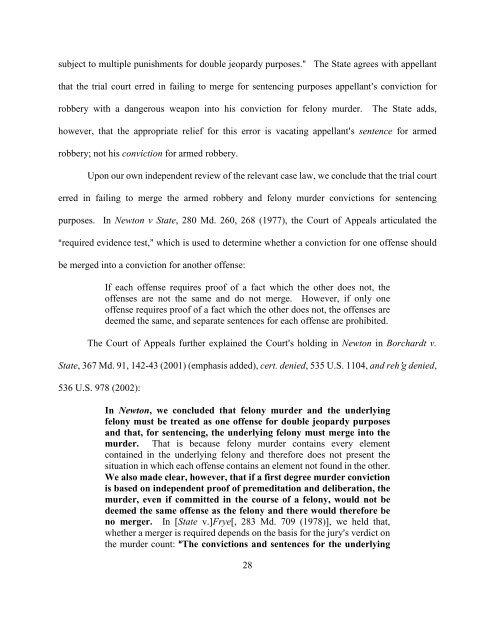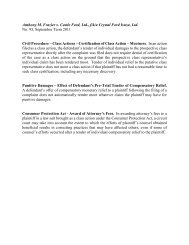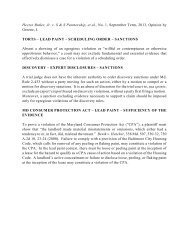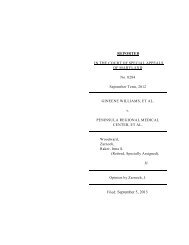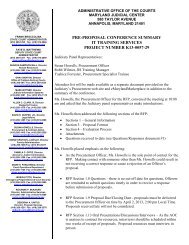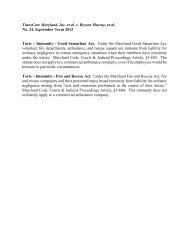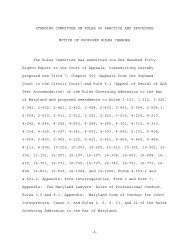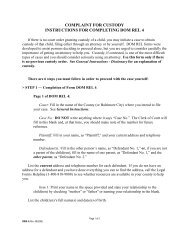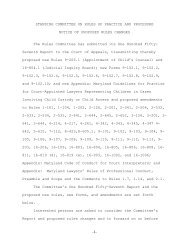2842/09 - Maryland Courts
2842/09 - Maryland Courts
2842/09 - Maryland Courts
You also want an ePaper? Increase the reach of your titles
YUMPU automatically turns print PDFs into web optimized ePapers that Google loves.
subject to multiple punishments for double jeopardy purposes.@ The State agrees with appellant<br />
that the trial court erred in failing to merge for sentencing purposes appellant=s conviction for<br />
robbery with a dangerous weapon into his conviction for felony murder. The State adds,<br />
however, that the appropriate relief for this error is vacating appellant=s sentence for armed<br />
robbery; not his conviction for armed robbery.<br />
Upon our own independent review of the relevant case law, we conclude that the trial court<br />
erred in failing to merge the armed robbery and felony murder convictions for sentencing<br />
purposes. In Newton v State, 280 Md. 260, 268 (1977), the Court of Appeals articulated the<br />
Arequired evidence test,@ which is used to determine whether a conviction for one offense should<br />
be merged into a conviction for another offense:<br />
If each offense requires proof of a fact which the other does not, the<br />
offenses are not the same and do not merge. However, if only one<br />
offense requires proof of a fact which the other does not, the offenses are<br />
deemed the same, and separate sentences for each offense are prohibited.<br />
The Court of Appeals further explained the Court=s holding in Newton in Borchardt v.<br />
State, 367 Md. 91, 142-43 (2001) (emphasis added), cert. denied, 535 U.S. 1104, and reh=g denied,<br />
536 U.S. 978 (2002):<br />
In Newton, we concluded that felony murder and the underlying<br />
felony must be treated as one offense for double jeopardy purposes<br />
and that, for sentencing, the underlying felony must merge into the<br />
murder. That is because felony murder contains every element<br />
contained in the underlying felony and therefore does not present the<br />
situation in which each offense contains an element not found in the other.<br />
We also made clear, however, that if a first degree murder conviction<br />
is based on independent proof of premeditation and deliberation, the<br />
murder, even if committed in the course of a felony, would not be<br />
deemed the same offense as the felony and there would therefore be<br />
no merger. In [State v.]Frye[, 283 Md. 7<strong>09</strong> (1978)], we held that,<br />
whether a merger is required depends on the basis for the jury=s verdict on<br />
the murder count: AThe convictions and sentences for the underlying<br />
28


